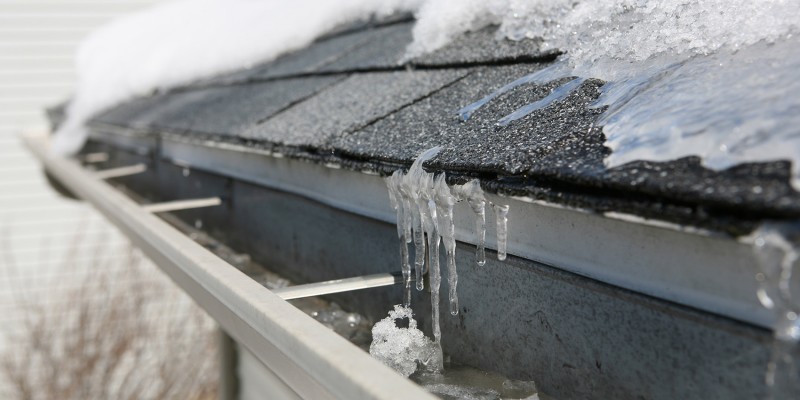You would typically experience this type of leak in the spring thaw or on sunny or mild winter days. Older Winnipeg homes are especially prone to this type of leaking due to our extreme climate and weather patterns.
You would typically experience this type of leak in the spring thaw or on sunny or mild winter days. Older Winnipeg homes are especially prone to this type of leaking due to our extreme climate and weather patterns. Ice dams will generally form at the eaves edge of a house as well as in valleys. When snow melts the water runs down the roof re-freezes at the overhangs and forms an ice build up. As more snow melts, more water runs down the roof and meets the ice build up or dam and backs up under the shingles and into the attic. The melting snow is often caused by warm, moist air escaping into the attic due to a poor vapour barrier. This type of leak is not workmanship related and is not covered under labour warranties.
Leakage in attic after ice build-up
Possible cause: Inadequate shingle underlayment allows water from ice dams to leak into attic
The best way to prevent or reduce ice dams is to eliminate or reduce the amount of warm air that is escaping into the attic and to reduce the relative humidity in your home. Improving the vapor barrier and sealing off attic air leaks is the number one step to take to solve these issues. Another way to deal with the problem, but is not a solution, is having the snow removed from the roof by a reputable snow removal expert, so that you eliminate or reduce the source of water. Having proper ventilation is an important factor on a roof but it is not a solution for this type of problem. Ventilation is not effective in removing moisture from an attic space in the winter. Installing ice and water shield is a good idea but again it is not a cure. Ice shields and ventilation do not address the root problem, which is heat and moisture escaping into the attic due to a poor vapor barrier. Heat cables have also proven to be ineffective in managing ice dam problems.

